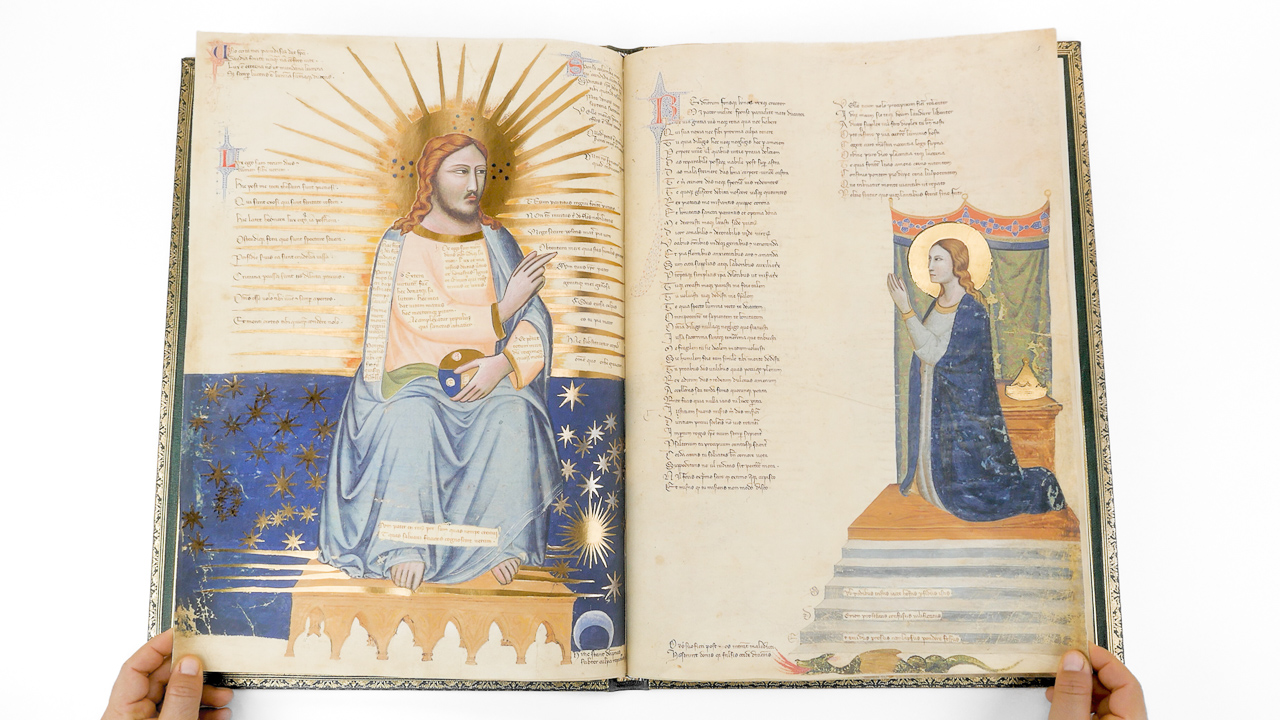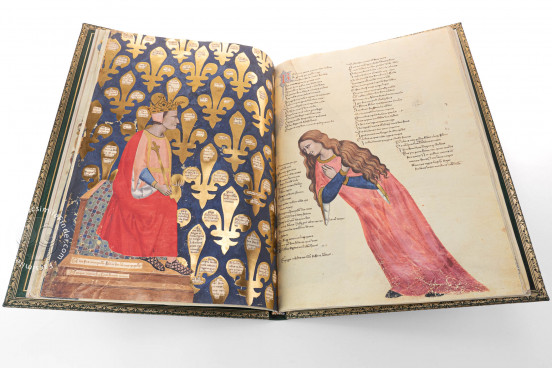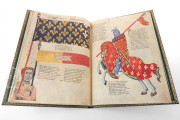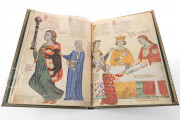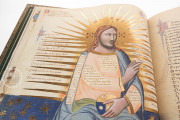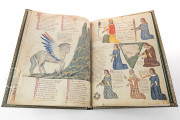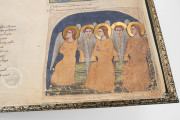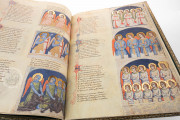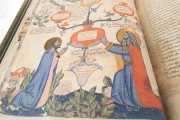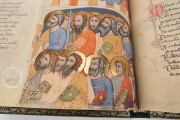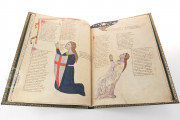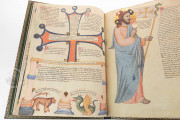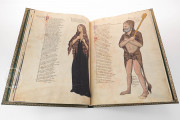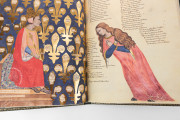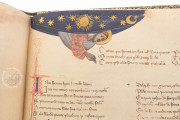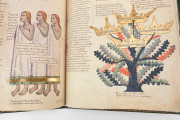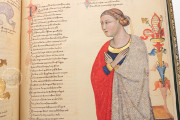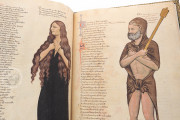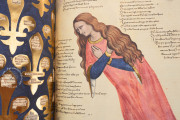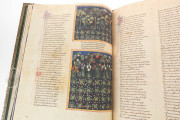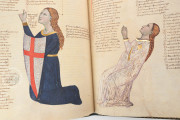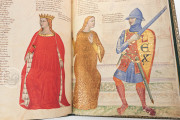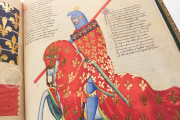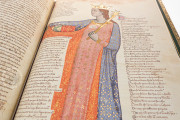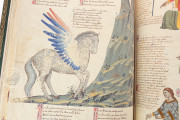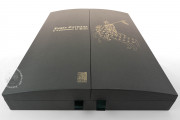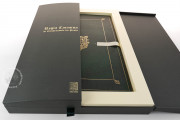The Carmina Regia—or Address of the City of Prato to Robert of Anjou—is a gloriously illuminated manuscript of epic Latin occasional poetry addressed to Robert of Anjou, King of Naples. The text, traditionally attributed to Convenevole da Prato, implores the king to unify Italy and restore the papacy to Rome from Avignon. The manuscript was created in or near Florence around 1334 and was presented to Robert personally.
The request to Robert is illustrated with mythological characters and personifications. The large format of the manuscript lends a monumental quality to the forty-seven mostly figural images, which have been attributed to Pacino da Bonaguida, a follower of Giotto.
Poems and Personifications
The large manuscript contains a series of epic poems, to which the monumental illustrations are closely bound. Many of the figures are mythological or personifications of nations and cities. The text, written in Gothic Cursiva, generally in two columns, is presented with exquisitely flourished initials in red and blue.
Among the many concepts represented as monumental human female figures are the seven liberal arts and nine muses (fols. 29r-30v). Also represented are many Christian themes, such as Christ in Majesty facing a kneeling Virgin Mary (fols. 4v-5r) and the personifications of the virtues of Faith, Hope, Charity, and Fortitude (fols. 19v-21r).
The blending of subjects from classical antiquity and Christianity is matched by Pacino's style, which reveals strong roots in traditional Christian painting of the Middle Ages and shows acute interest in emerging naturalism that constitutes a classical revival.
An Entreaty to Robert of Anjou
Robert of Anjou (1278-1343) ruled Naples during the early decades of the fourteenth century. Styled "the wise," he was a great patron of the arts. Under his rule, Naples became prosperous through peace and trade. He was known as a peacemaker, and perhaps his reticence for imperialism caused Prato's request to unify Italy to fall on deaf ears.
Politics on Parchment
The Carmina Regia is an example of the medieval practice of creating sumptuous manuscripts for gift-giving to the nobility, often to curry political and personal favors from monarchs. In this case, the recipient is pictured in front of a backdrop of golden fleurs-de-lis filled with verses of poetry opposite a personification of Italy, bowing in supplication (fols. 10v-11r).
The manuscript probably remained in continuous royal possession, eventually becoming part of the English royal library, bequeathed to the people to become a part of the British Museum in 1757. Most of the manuscripts of the British Museum library, including the Carmina Regia, were transferred to the British Library in 1973.
We have 1 facsimile edition of the manuscript "Carmina Regia": Regia Carmina di Convenevole da Prato facsimile edition, published by ArtCodex, 2015
Request Info / Price
